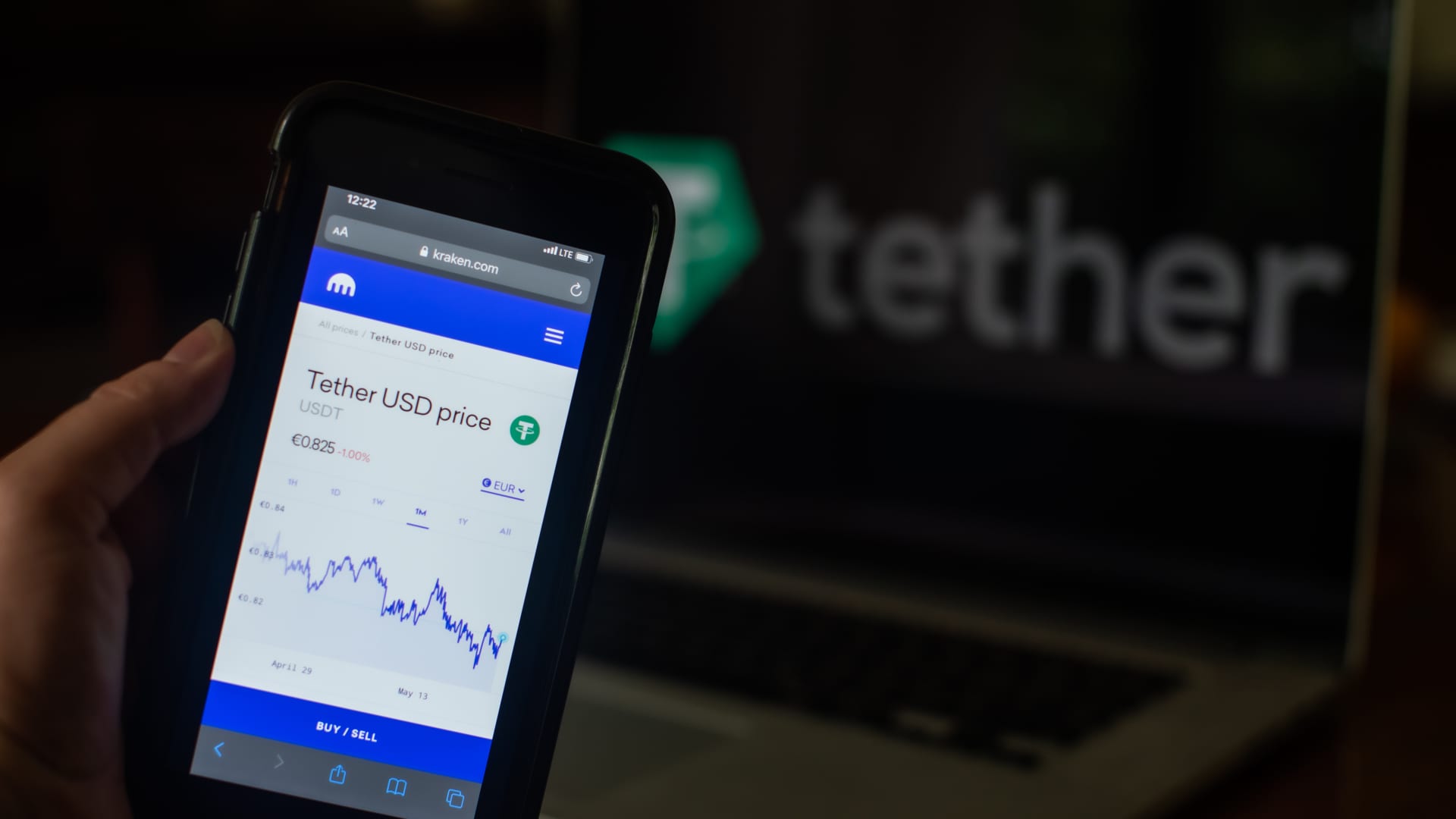Tether, the world’s largest stablecoin, regained its peg to the dollar after more than $3 billion worth of tokens left the system in a single day.
The cryptocurrency — which is meant to always be worth $1 — sunk as low as 95 cents on Thursday and struggled to climb back to its intended dollar peg.
By Friday, tether was trading firmly at $1 again, soothing investors’ fears about a possible crypto market contagion from the collapse of embattled stablecoin project Terra.
TerraUSD, or UST, is different to tether in that it relies on a complex mix of code and a sister token called luna to stabilize its price. It was also partly collateralized by billions of dollars’ worth of bitcoin.
Tether, on the other hand, is supposed to be backed by cash, short-term debt obligations corresponding to an equivalent amount of dollars deposited by its users. Those assets are held in a reserve managed by a company of the same name.
It’s essentially like a bank account for crypto investors, who often turn to tether in times of heightened market volatility. Much bitcoin trading is done in tether.
Tether now has a circulating supply of around $79.5 billion, down from $82.9 billion 24 hours earlier. suggesting the company behind it processed over $3 billion in redemptions in just one day.
Mati Greenspan, CEO of Quantum Economics, said the Terra debacle had “shaken” the crypto market’s confidence in other stablecoins, like tether.
“The DeFi [decentralized finance] market certainly has a lot riding on the precept that stablecoins can remain stable, so if things start to unravel it could be potentially catastrophic for the industry,” he said.
Paolo Ardoino, Tether’s chief technology officer, took to Twitter to reassure investors about the soundness of his company’s stablecoin.
“We had pretty much $3 billion [in] redemptions, and they were liquidated pretty quickly through our banking channels,” Ardoino said in an hour-long Twitter Spaces live audio conversation Thursday.
Redemption requests ranged from a minimum of $100,000 to as much as $600 million, he added.
The problem with Terra’s UST, Ardoino said, was how quickly it grew.
“It’s all fun and games until you are a $10 billion stablecoin,” he said. “Until you are a $5, $10 billion stablecoin, even if you have some liquidations because you are backed by some luna and a small portion of bitcoin, the current crypto markets are still able to maybe, probably absorb that.”
“But if you start doubling the size to a $20 billion stablecoin … there is no way that the market can absorb these type of liquidations,” Ardoino added.
Tether has long faced questions over whether it has enough assets to justify its peg to the dollar. The company previously said all its tokens were backed one-to-one by dollars held in a reserve.
However, after a settlement with the New York attorney general, it was revealed that Tether held a range of other assets — including commercial paper, a form of short-term, unsecured debt — to back its token.
Tether has since reduced how much commercial paper it holds and says it plans to lower the amount further over time. More than 52% of Tether’s assets are now in U.S. Treasury bills and this is expected to grow even further when the company next discloses the breakdown of its reserves, Ardoino said Thursday.
